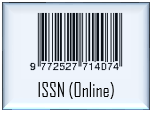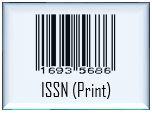Optimization of Crospovidone and Copovidone in Fast Disintegrating Tablet (FDT) Diphenhydramine HCl Using Factorial Design
(1) Faculty of Pharmacy, Universitas Sanata Dharma
(2) Faculty of Pharmacy, Universitas Sanata Dharma
(*) Corresponding Author
Abstract
Keywords
Full Text:
PDFReferences
AOAC International, 2016. Guidelines for Standard Method Performance Requirements. AOAC Official Methods of Analysis.
British Pharmacopoeia Commission, 2011. British Pharmacopoeia 2011. London: TSO.
Chacko, A.J., Jose, S., Babu, N., Michelle, M., Jose, S., 2010. Design and Development of Orodispersible Tablets of Promethazine Theoclate Using Coprocessed Superdisintegrants and Subliming Materials. Int. J. Innov. Pharm. Res., 1(2), 53–56.
Chime, S.A., Brown, S.A., Ugwu, C.E., Agubata, C.O., Obidike, T.C., Onunkwo, G.C., 2012. Effect of Binder Type and Concentration on The In Vitro Properties of Alstonia Boonei Tablets, Int. J. Pharm. Sci. Rev. Res., 16(2), 5–9.
Deshmukh, V.N., Zade, N.H., Sakarkar, D.M., 2012. Development and evaluation of orally disintegrating tablet by direct compression method. International Journal of PharmTech Research, 4 (4), 1351–1357.
Fatohy, H. and Abdul-rasool, A. a, 2013. Effect of Different Diluent and Binder Types on the Preparation of Bisoprolol Fumarate as Tablet Dosage Form. Iraqi J Pharm Science, 22 (1), 32–39.
Food and Drug Administration, 2008. Guidance for Industry: Orally Disintegrating Tablets. Center for Drug Evaluation and Research (CDER).
Food and Drug Administration, 2014. APPENDIX 1 – ORA Validation and Verification Guidance for Human Drug Analytical Methods. Food and Drug Administration.
Gowtham, M., Muhammed Sharis, C., Moidu, M., Meharunneesa, K., Anaz, M., Paridhavi, M., 2011. Formulation and Evaluation of Fast Dissolving Diphenhydramine Hydrochloride Tablets. International Journal of Drug Formulation and Research, 02(05), 309–319.
Jyothi, A.A., Mounika, P., Vineesha, S., Mehdia, S., Dutt, A.N., 2013. Formulatiom Development and Evaluation of Oral Thin Films- Diphenhydramine HCl. International Journal of Pharmaceutical Sciences and Research, 4(9), 3484–3488.
Katzung, B.G., Masters, S.B., Trevor, A.J., 2012. Histamine, Serotonin & The Ergots Alkaloids. In: Basic & Clinical Pharmacology. Lange Medical Publications, 278.
Ministry of Health of the Republic of Indonesia, 2020. Indonesian Pharmacopeia VI. Jakarta: Ministry of Health of the Republic of Indonesia.
Mishra, A.K., Kumar, A., Mishra, A., 2010. Development and Validation of UV Spectrophotometric Method for Estimation of Diphenhydramine Hydrochloride in Soft Gelatin Capsule. International Journal of Pharmaceutical Sciences and Research, 1(8), 144–148.
Mohanachandran, P.S., Sindhumol, P.G., Kiran, T.S., 2011. Superdisintegrants: An overview. Int. J. Pharm. Sci. Rev. Res., 6(1), 105–109.
Moroni, A., 2001. A novel copovidone binder for dry granulation and direct-compression tableting. Pharmaceutical Technology DRUG DELIVERY, 25(9), 8–13.
Pabari, R.M. and Ramtoola, Z., 2012. Effect of a Disintegration Mechanism on Wetting, Water Absorption, and Disintegration Time of Orodispersible Tablets. Journal of Young Pharmacists, 4 (3), 157–163.
Qiu, Y., Chen, Y., Zhang, G.G.Z., Yu, L., Mantri, R. V., 2017. Developing Solid Oral Dosage Forms Pharmaceutical Theory & Practice. 2nd ed. Mica Haley.
Satpute, M.M. and Tour, N.S., 2013. Formulation and In Vitro Evaluation of Fast Dissolving Tablets of Metoprolol Tartrate. Brazilian Journal of Pharmaceutical Sciences, 49(4), 783–792.
Sharma, D., Singh, G., Kumar, D., Singh, M., 2015. Formulation Development and Evaluation of Fast Disintegrating Tablets of Salbutamol Sulphate, Cetirizine Hydrochloride in Combined Pharmaceutical Dosage Form: A New Era In Novel Drug Delivery For Pediatrics And Geriatrics. Journal of Drug Delivery, 2015, 640529.
Whelan, R. and Apfel, C.C., 2013. Pharmacology of Postoperative Nausea and Vomiting. In: Pharmacology and Physiology for Anesthesia. Philadelphia: Elsevier Inc., 503–522.
DOI: https://doi.org/10.24071/jpsc.006396
Refbacks
- There are currently no refbacks.
Copyright (c) 2023 Jurnal Farmasi Sains dan Komunitas (Journal of Pharmaceutical Sciences and Community)
Jurnal Farmasi Sains dan Komunitas (Journal of Pharmaceutical Sciences and Community)
Published by Faculty of Pharmacy, Universitas Sanata Dharma Yogyakarta

This work is licensed under a Creative Commons Attribution 4.0 International License.














.png)













